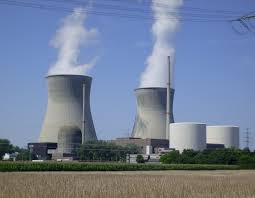Time To Take Nuclear Power Off the Table?
 On August 9th the Miami Herald carried an OpEd “Nuclear Power is a Losing Proposition” written by leaders of the Sierra Club, Greenpeace USA, and Friends of the Earth, arguing that nuclear energy is too expensive and dangerous. They conclude it is time to divert all resources to renewable energy, particularly solar and wind.
On August 9th the Miami Herald carried an OpEd “Nuclear Power is a Losing Proposition” written by leaders of the Sierra Club, Greenpeace USA, and Friends of the Earth, arguing that nuclear energy is too expensive and dangerous. They conclude it is time to divert all resources to renewable energy, particularly solar and wind.
For the record I fully endorse going to 100% renewable energy just as soon as that is practical. But the position in the OpEd leaves out three significant points:
- Over the next couple of decades we cannot scale up wind, solar, and other renewables fast enough to replace the present substantial 13-14% of electrical generation provided by nuclear. (Dept of Energy) It will take time. Manufacturing the equipment to generate solar has an energy payback of several years. (Argonne National Labs) As a result scaling up renewables at peak rates would require even more energy generating capacity in the short term.
- To fully develop the generation capacity from renewables, our electrical grid and infrastructure need to be sorely updated, expanded and significantly relocated to take advantage of the areas where solar and wind are optimal. Modernizing our energy grid has been a chronic challenge for many decades due to an intricate web of federal, state, and private considerations.
- The other key issue is that any reduction of nuclear power in the near-term would almost certainly be filled by coal and the other fossil fuels, producing vast amounts of carbon dioxide now, which is what is trapping the heat in the atmosphere and oceans. Any reduction of nuclear power exacerbates the global warming problem with the diverse disastrous impacts, including melting the polar ice and raising global sea level.
Even with the huge recent growth of natural gas in the United States, the production of sufficient reliable economical energy is a mix. To get off of coal in the next few decades (and to avoid having to use the even more harmful “tar sands”) we need to utilize all practical energy generation that does not add to the greenhouse gases, which trap the heat, warm the oceans, melt the ice, and raise sea level. That means nuclear energy as well as all the solar, wind, hydro, geothermal, and other renewables.
Nuclear provides reliable power round the clock, something far beyond the immediate capacity of renewable energy. It is electricity without carbon dioxide emissions, one of the primary greenhouse gases (GHG) that are at the root of the warming crisis. Certainly nuclear power presents special risks and warrants significant effort to enhance safety and find even better technology.
We do have important energy choices to make about coal, tar sands, and other sources and need to focus on their contribution to the “greenhouse effect.” Renewable energy is terrific from that standpoint, including solar, wind, hydro, geothermal and others. We need to give every encouragement and policy incentive to those technologies, looking ahead to the time when they can meet all of our requirements.
In the next two decades the numbers show that renewables are not fully scalable to take care of all our present energy needs. In addition there is the growing demand for energy by a world population on track to grow from seven billion to nearly ten billion by mid-century. Improvements to renewable sources, battery storage, and our electrical grid are promising and worthy of stimulation, but are simply not able to fulfill our energy requirements today.
Taking nuclear ‘off the table’ at this time would have a direct negative impact significantly elevating the level of CO2 and the warming. This is a time for pragmatic realism. A smart energy policy is essential. Reduction of greenhouse gases needs to be at the top of the list of criteria. The stakes could not be higher, for us, for our children, and for future generations.
